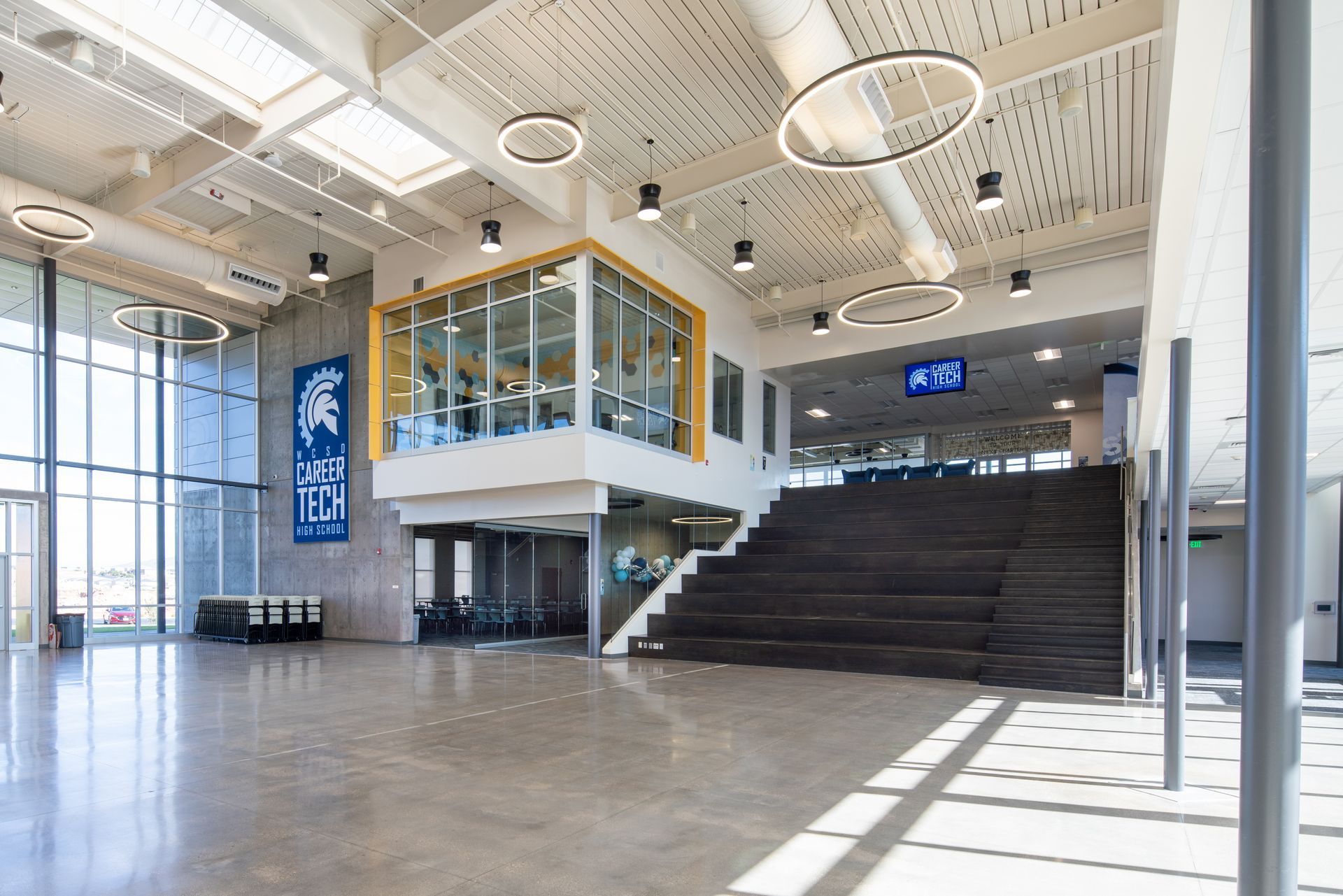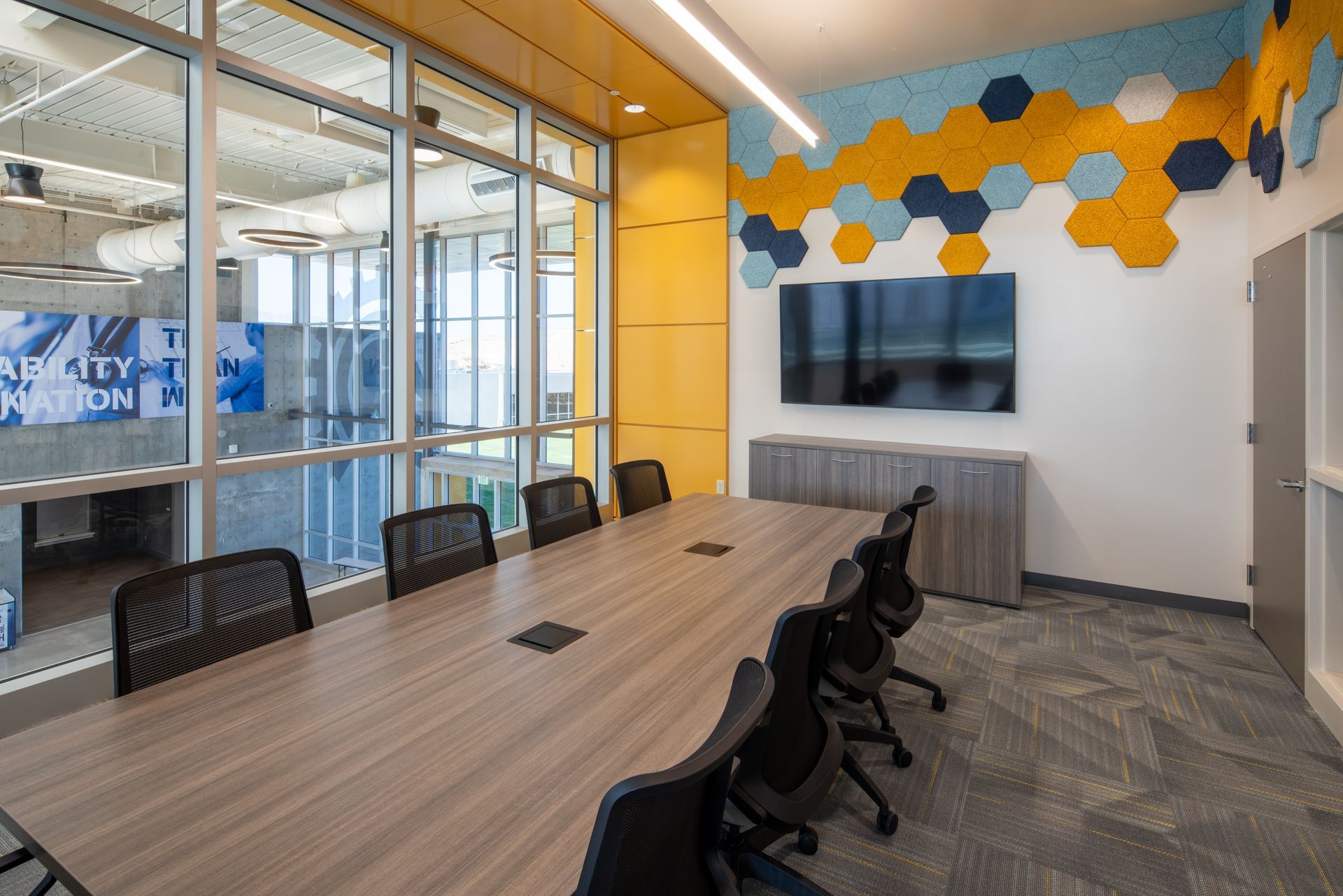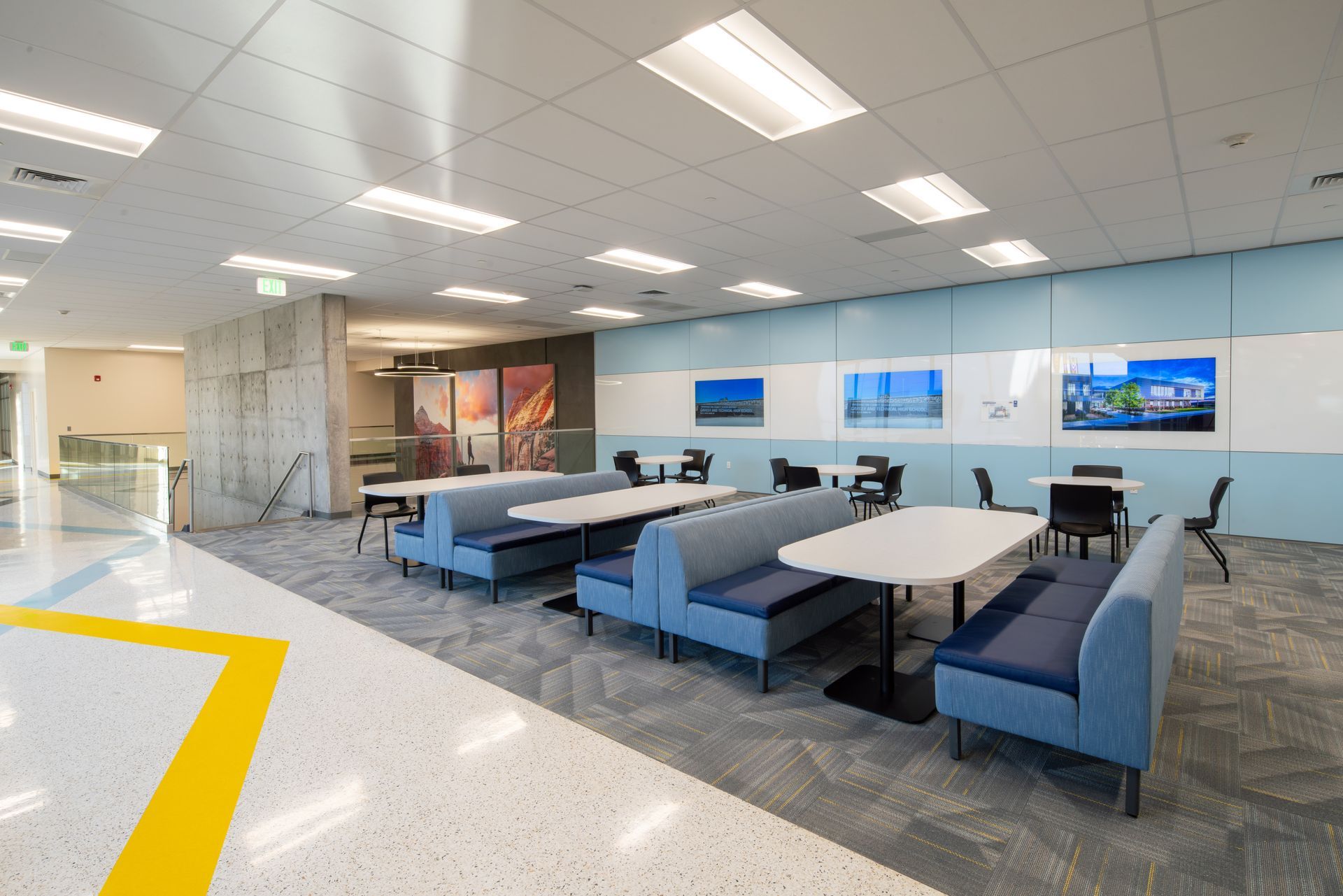New CTE school in St. George offers students eight different career path options in a dynamic building designed around an endangered native flower. By Brad Fullmer

Large windows envelop the entire building, welcoming abundant natural daylight into every corner. This design choice not only enhances the overall aesthetic but also contributes to a sustainable and energy-efficient environment. The infusion of natural light creates a positive atmosphere, promoting well-being and productivity among students and faculty.
"We wanted that open feel and there is a lot of glass to let light diffuse through the building, which is helped with the courtyard in the center," said White. "The courtyard was designed to [expand] learning spaces; it becomes an extension of the indoor spaces."
One unique design element is the outer wall being adorned with masonry spelling "Career and Technical High School" in binary code, a creative nod to the school's focus on technology and the digital world. It's an artistic expression that seamlessly weaves together technology and education, creating a visual metaphor for the school's mission.
Concrete is used generously throughout the project's exterior and interior and gives a sense of protection and permanence.
Even though there are plenty of hard surfaces in the building that contribute to a maintenance-friendly environment, there are numerous softer surfaces that required great attention to detail. This is never more noticeable than on the learning stairs that have been completely capped with stained maple flooring. The wood workers and finishers did a masterful job of tying this area into the surrounding concrete and glass.
The vinyl flooring that occurs in the classroom hallways was masterfully cut at different angles to create a dynamic pattern.
Overall, it's a showstopper, one that is attracting the attention of educational and political officials alike throughout Utah and other states.
"They are getting visits from school districts across the state and nation—it's a beacon that is attracting interest from all over," said White. "Generally, we hear very positive things both regarding the educational part of it and the architecture."
"I see this being a new standard for career and technical education—it's been widely successful and we're already talking about expanding the building," said Dyer.
White said tilt-up concrete has been a favorite of WCSD for many years and this one was unique with black onyx concrete and a white metal panel with yellow accents providing a sharp-looking aesthetic.
"The prototype [schools] 20-plus years ago were 100% tilt-up; it serves them well," White said about the District. "We developed a couple of intermediate schools with a tilt-up exterior and CMU blocks on the inside. On CTE there is almost no CMU, it's all tilt-up with a percentage of metal panel. It's an evolution in architecture." Functionality within the tilt-up concrete school was paramount, with the entry to the building being a suspended walkway that gives a sense of grandeur as one arrives on campus. Tilt-up concrete construction and corrugated metal panels create a prestigious façade as the tall expanses of curtainwall and the well-placed windows allow light to stream all the way through the building.
The building itself is an educational exhibit, with exposed mechanical, electrical and structural elements creating opportunities for inquiry. This transparency aligns with the school's overarching mission of providing students with a clear understanding of how things work. Subcontractors did an incredible job making sure each of these elements were well-built, while creating an amazing visual. This is especially apparent in the out-building, where the ground-source heat pump system is exposed to view.
The eight specific career pathways are evidenced by the specific types of amenities found within each area. For example, cutting-edge industrial-sized kitchens are equipped to fulfill culinary aspirations with a thoughtful layout that caters to educational needs and reflects the school's commitment to preparing students for real-world careers.
The inclusion of a 10-ton crane in the shop is another example of the practicality and hands-on focus of the school's curriculum. This heavy machinery is not just a symbol; it's a functional tool that allows students to engage in substantial construction projects, providing a tangible link between theoretical knowledge and real-world applications.
Career Tech High School's architectural design is a testament to thoughtful innovation, seamlessly integrating aesthetic appeal, functionality, and a strong connection to the local environment.
The open courtyard at the heart of the school serves as a central gathering space, fostering a sense of community and providing a tranquil area for students to connect with nature. This intentional design element goes beyond traditional educational layouts, recognizing the importance of outdoor spaces for both relaxation and collaborative learning.
The emphasis on communal spaces extends to several open areas throughout the school, strategically designed to facilitate group gatherings and collaborative study sessions. These spaces promote a sense of camaraderie among students and encourage the exchange of ideas, aligning with modern educational philosophies that recognize the value of collaborative learning environments.
Career Technical High School
Location: St. George
Start-Completion: 2021-2023
Cost: $29.6 million
Delivery Method: Design-Bid-Build
Stories/Levels: 2
Square Footage: 126,607
Owner: Washington County School District
Owner's Rep: Bryan Dyer
Design Team
Architect: Naylor Wentworth Lund Architects
Civil Engineer: Alpha Engineering
Electrical Engineer: BNA Consulting
Mechanical Engineer: VBFA
Structural Engineer: BHB Structural Engineers
Geotechnical Engineer: AGEC
Landscape Architect: EA Lyman
Construction Team
GC: Bud Mahas Construction
Concrete: Bud Mahas Construction
Plumbing & HVAC: L&L Mechanical
Electrical: Snow Electric
Masonry: C&C Masonry
Drywall: Utah Commercial Construction
Acoustics: Goulder Acoustics
Painting: Pacific Painting
Tile/Stone: Bottema Tile Inc.
Flooring: St. George Flooring
Roofing: Heritage Roofing
Glazing/Curtain Wall: G&B Glass
Waterproofing: Flynn/Noorda
Steel Fabrication & Erection: Theobald Construction
Excavation: Renegade Contractors


































